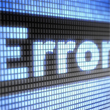Your 10-Part New Product Launch Plan
 Successful product launches are not singular events. They are processes. They require plans. These plans must be committed to by all members of your staff – which means everyone involved in the project must be aware of their responsibilities. Time-frames, strategies and objectives all need to be outlined and detailed. These 10 areas represent what you should follow when developing a successful product launch plan.
Successful product launches are not singular events. They are processes. They require plans. These plans must be committed to by all members of your staff – which means everyone involved in the project must be aware of their responsibilities. Time-frames, strategies and objectives all need to be outlined and detailed. These 10 areas represent what you should follow when developing a successful product launch plan.
Define Sales Objectives
This part of your plan establishes common goals that you want your product to reach. Be as accurate as you can. Research the market to reinforce these goals. The more work you do in the planning stages, the more knowledge you’ll have about how your objectives and product will rank in the market.
Launch Date
By scheduling a launch date for your product, you can develop a time line for everything on your product launch checklist. This way you can start allocating resources to your launch and identifying members of your staff to take care of key responsibilities. Engineers, artists, marketing, public relations, advertising, or anyone from outside your organization all need to be informed of your launch date and be on the same page with your plan. Regularly keep track of your time line to make sure that all involved are on schedule.
It’s absolutely critical you meet this deadline. The success of your product depends on it. If you’ve correctly marketed yourself, customers will be anticipating your launch. If they doubt your ability to come through in this area, they’ll doubt you can come through anywhere else. By committing to a fixed date, you’re forcing yourself to launch the product no matter what.
The Product
Product Overview
Customers demand that your product be perfect from the moment they put their hands on it. You’ll only have one opportunity to make a positive impression on them, and you need to capitalize on it. Work with your development team to be sure that your product can be ready for its launch not just physically complete, but of the highest quality and functionality.
Product Testing
Bringing a new product or service to market can be very expensive. With all of the resources required to get it into the hands of the consumers, it could be disaster to rush your launch without proper testing. But, what should that testing involve? Look at not only your product, but also your marketing messages and materials. Depending on what your item is and the budget that you’ve allocated to market testing, you have a few options.
You could establish more traditional focus groups, or simply set up a conversation with members of your target audience. Have them take a look at your product and it’s marketing and get their feedback. Determine what they think works, and what doesn’t. You could also use online market testing, or survey people in locations where your target audience might gather, like sporting events, malls or trade shows. Another thought would be to consider giving your product to a specific group of current product users so that they can test it.
Only after you’ve completely finished testing should your product and its marketing materials be finalized.
Product Packaging
Packaging can often be the first impression a customer gets of your new product. By creating a unique package design, you make your product stand out in the retail space and differentiate it from the competition.
Marketing
Marketing Mediums
According to AcuPoll, a Cincinnati based research agency, as many as 95% of new products introduced each year fail. Today, consumers get information from multiple sources, requiring multiple marketing channels to ensure the success of a product launch. You need to determine what forms will work best for you depending on your product. The marketing for your new product launch can be broken down into a few key areas:
- Advertising – Television, radio, newspaper, magazine, outdoor
- Online Marketing – Websites, online advertising, social media, email marketing, online retail sites, blogger and social media influencer outreach
- Promotional Literature – Business cards, brochures, flyers
- Promotional Products – Drinkware, calendars, key chains
- Direct Mail – Sales letters, self-mailers, postcards, media mailers, CD mailers
- Guerilla Marketing – Have someone dress up as your new product and mingle through a crowd at a public place or an event
- Trade Shows and Conferences – Events are a great place to interact with the media, customers, and other businesses
- Press Kits – These can be delivered to bloggers and reporters to increase media exposure.
Public Relations
PR needs to be used in conjunction with advertising and marketing in your new product launch. In essence, it paves the way for your sales and marketing messages to be received. By establishing your PR campaign prior to the launch of your new product, you’re building trust in the minds of your prospects. A great way to start building positive PR for your product is by means of a press packet.
Reporters, bloggers, journalists and other media professionals are more apt to cover your new product if you provide them with as much information as possible. They get copies of press releases all the time, but a press kit takes this idea one step further. They can be a valuable public relations tool and should contain not only your press release, but also other useful info like product fact sheets, company bios, quote sheets, product images and video, promotional literature, media contact information and possibly a sample of the product itself.
Launch Schedule
Pre-Launch Due Dates
Ads, press releases, samples, mailings or other items that promote your new product need to be released just before the product launches. You want to gain the interest of the buying public and also make sure that any changes in launch date are clearly communicated.
Product Launch
This is where you introduce your product to the world. The point of a launch event is not to simply get exposure and have as many people as possible find out about your product, it’s to reach the specific audience that will turn into someone willing to pay for your product. Consider holding your event at the following:
- Trade Shows
- Conferences
- Networking Groups
- Seminars
Post-Launch
Your product’s launch is only the beginning. Not all of your potential customers were there for the product’s launch, after all. Keep up the momentum and share testimonials or news about the product’s success to get your company in the paper, trade publications, or even in the ears of your target audience. Don’t stop there; you should always have a few more releases of information to share over the next year that will remind everyone about your product.
Conclusion
It’s crucial that you stick as close to your product launch plan as possible. In the long run, it will save you money. You’ve established a time line for your launch based on this plan, so any changes are going to compromise it and delay your launch. Monitor any modifications that you might have to make to the plan and try to anticipate things that might derail your progress.
Posted in Marketing, Marketing Plans, Product Launch Marketing
Don`t neglect your friends, share this right away.





Leave a Reply